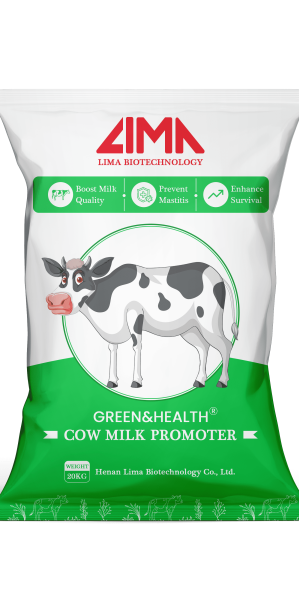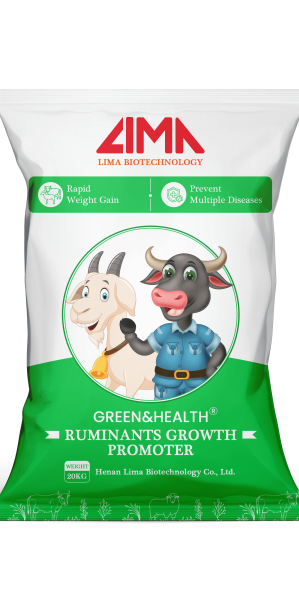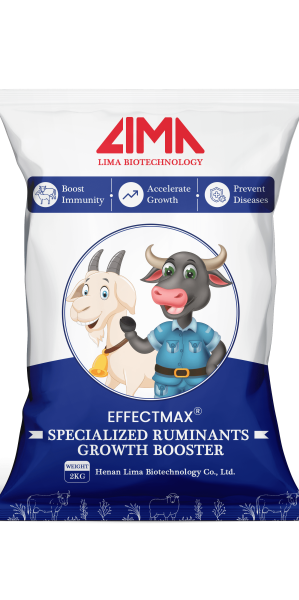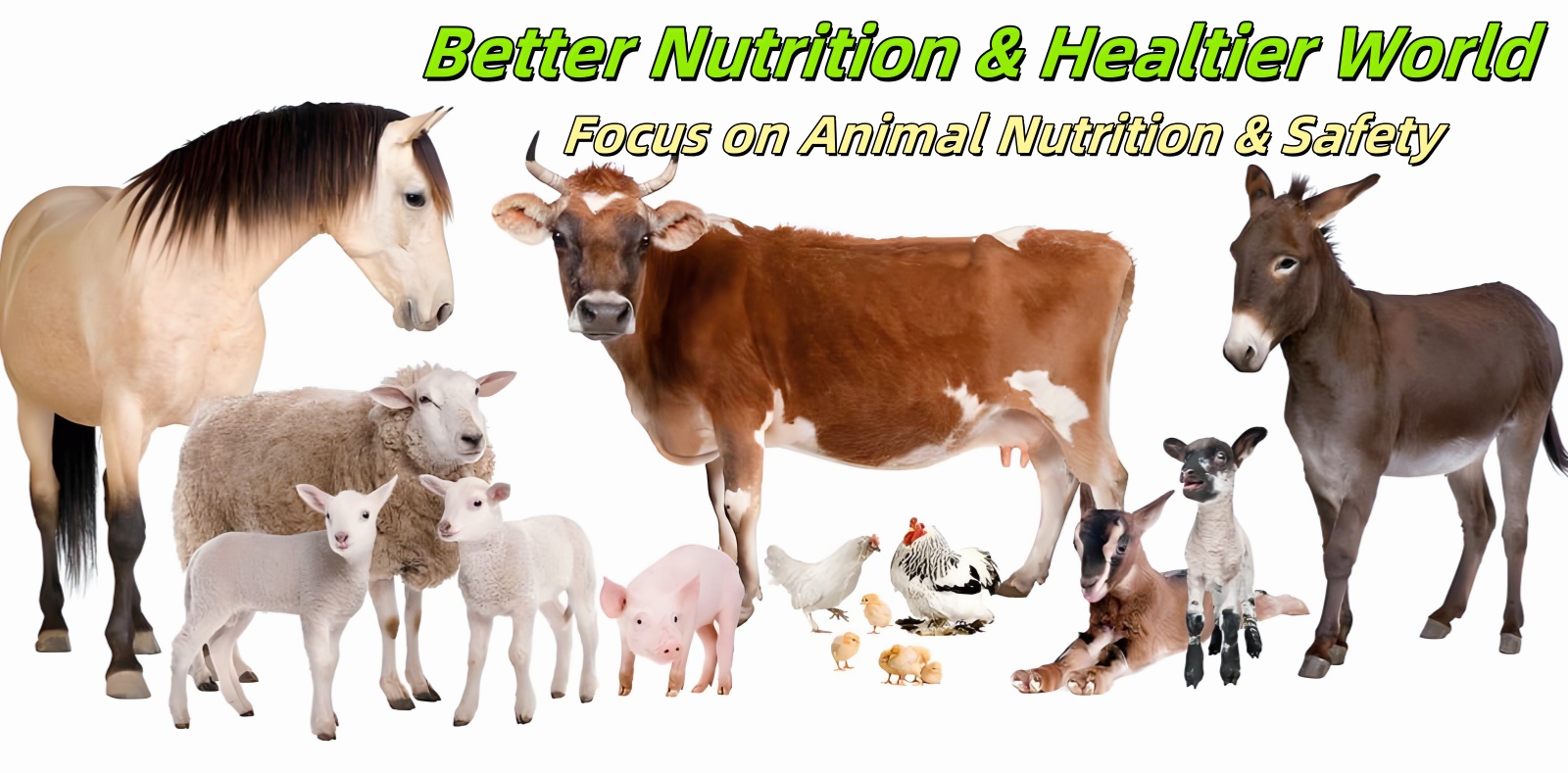Dairy farming plays a significant role in Kenya's agricultural landscape. It not only provides abundant dairy products for the local people, but also is the main source of income for many farmers' families, and has made a significant contribution to the country's agricultural development and economic growth. However, there is still much room for improvement in the milk production of dairy cows in Kenya. If scientific and rational measures can be taken to increase milk production, it will not only better meet the growing local demand for dairy products, but also significantly increase the income of farmers and improve their living standards.
Choosing quality dairy breeds
Selecting good quality dairy breeds is the basis for improving milk production. In Kenya, a number of high-yielding breeds have shown good adaptability and milk production potential, which can be further unlocked with scientific feeding and the use of dairy cow milk booster.
The Holstein, Juanshan and Ayrshire are some of the high yielding breeds that are well adapted to the Kenyan climate. Holstein cows are very high yielding but have relatively high feed requirements, but in some areas of Kenya where feed conditions are favorable, they can perform even better with the use of milk growth booster. The Juanzan cow, although slightly lower in milk yield than the Holstein cow, has a high milk fat percentage and is more adaptable to hot climates, and survives well in most parts of Kenya, where the addition of a cow milk growth promoter can give it an even more pronounced advantage in milk production. The Ayrshire cow has the advantage of both milk production and adaptability, and is able to maintain a stable level of milk production in different environments.
Crossbreeding is also an effective way to increase milk production. Crossbreeding local breeds with exotic high yielding breeds often results in the offspring inheriting the adaptability of the local breeds to the local environment and the high milk yielding genes of the exotic breeds, which when combined with the scientific use of the cow milk booster, can increase milk production while ensuring that the cows are healthy in the Kenyan climate and breeding conditions.
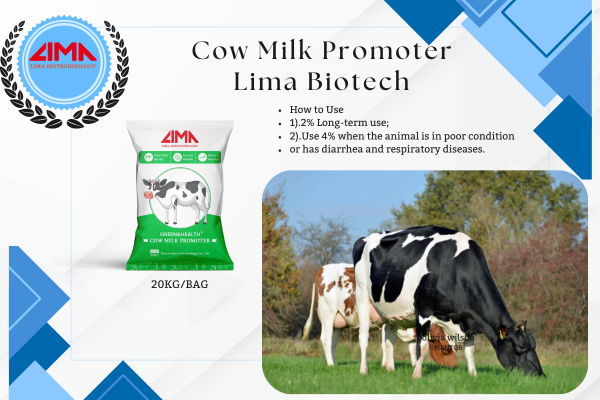
There are several points to keep in mind when selecting a healthy and productive cow. Firstly, look at the physical condition of the cow. A healthy cow is full of energy, bright-eyed, with a smooth, shiny coat and strong limbs. It is also important to look at the milk production record of the cow's ancestors. Cows with high milk production from their ancestors usually have a high milk production potential. It is also important to check the cow's udder development. Cows with full udders and well-distributed teats tend to have a higher milk production capacity, and the results of using a dairy cow milk booster will be more significant.
Optimizing feed management
Feed is the foundation of milk production in dairy cows. Scientific and rational feed management is essential to increase milk production, and products such as cow milk promoter can build on this foundation to further enhance milk production.
A balanced diet is the key. A cow's diet needs to contain sufficient energy, protein, vitamins and minerals. Energy can be obtained from feedstuffs such as maize silage and oats, protein can be supplemented by leguminous pasture and soya bean cake, and vitamins and minerals can be ensured by the addition of the right amount of feed additives. In Kenya, there are many suitable feed sources for dairy cows. Maize silage is nutritious and easy to store, making it a good energy feed; elephant grass grows vigorously and produces high yields, making it a good roughage for dairy cows; and the stalks and seeds of leguminous crops such as soybeans and groundnuts are rich in protein and provide adequate nutrition for dairy cows. It is worth noting that adding cow milk booster to the feed can help cows absorb the nutrients better and convert them into more milk. Cow Milk Promoter is rich in amino acids, vitamins and trace elements, which can effectively enhance the cow's digestion and absorption ability, and make full use of the feed nutrients.
Adequate water supply is also important for milk production. A cow's daily water intake is usually between 50-100 liters, depending on milk production, temperature and other factors. Ensure that cows have access to clean water at all times, and clean the drinking equipment regularly to avoid contamination of the water supply. In the hot season, you can also increase the amount of water available to prevent cows from becoming dehydrated, and use milk growth enhancer to minimize the effects of high temperatures on milk production.
The feeding time and quantity of feed also need to be reasonably arranged. Generally speaking, cows need to be fed 3-4 times a day. Keeping a regular feeding schedule will help cows digest and absorb the feed. At the same time, the amount of feed should be adjusted according to the cow's stage of lactation and physical condition. When adding dairy cow milk booster, it is also necessary to follow the product instructions and make reasonable adjustments in combination with the amount of feed. During peak lactation, cows need more nutrients and the feed intake should be increased appropriately, and the dosage of cow milk growth promoter can be increased (within the recommended range); while during the dry milk period, it should be reduced accordingly to ensure the normal metabolism of the cow's body.
Implementing Effective Health Care Practices
The health condition of cows directly affects their milk production, so it is essential to implement effective health care measures, so that healthy cows can better absorb the nutrients in the cow milk booster, and play the effect of milk increase.
Regular vaccination and deworming of cows is an important means of disease prevention. In Kenya, cows are susceptible to a number of diseases, such as foot-and-mouth disease and anthrax. For these common diseases, it is important to follow the advice of local veterinarians to receive the appropriate vaccines in a timely manner to establish an effective immune barrier. At the same time, regular deworming is also very important. Parasites can take away nutrients from the cow's body, affecting her growth and milk production, and deworming is generally required 2-4 times a year, depending on the local parasite activity. Healthy cows can synthesize milk more efficiently with Cow Milk Promoter because it does not contain ingredients that are harmful to the cow's health, but instead strengthens the body's immune system.
Prompt treatment of diseases is essential to maintain milk production. Common diseases in dairy cows such as mastitis and foot-and-mouth disease can lead to a significant drop in milk production. Breeders should closely observe the condition of their cows. Once abnormalities are detected, such as red, swollen udders, fever, depressed cows, loss of appetite, or lameness, etc., veterinarians should be called in promptly for diagnosis and treatment to avoid aggravation of the condition. After the cow recovers, appropriate amount of cow milk booster can be added to the feed to help her quickly recover her milk production level.
Proper hoof care should not be ignored. Regular hoof trimming prevents lameness, which reduces cow activity and affects appetite and milk production. Generally, hooves need to be trimmed every 2-3 months. At the same time, it is important to keep the bedding in the barn clean and dry to avoid soaking the hooves in manure and sewage and to minimize hoof disease. Healthy hooves allow cows to move and eat more comfortably, creating good conditions for absorbing the nutrients in the milk growth enhancer.
Creating a comfortable living environment
A comfortable living environment will keep the cows in good condition, which will increase milk production and allow the effects of the cow milk growth promoter to be fully realized.
The design of the barn should be reasonable. Each cow needs to have enough space to move around. Generally speaking, the floor space for adult cows should not be less than 4 square meters, so that they can move around freely and reduce friction and fighting among themselves. Good ventilation is also very important. Ventilation can regulate the temperature and air quality in the barn, avoid the accumulation of ammonia and other harmful gases, and keep the air fresh. In addition, the barn should be able to effectively withstand extreme weather conditions, providing shade and cooling in the hot season, and keeping the cows warm and out of the rain in cold and rainy times. The right environment reduces cow stress and allows the dairy cow milk booster to function better.
Keeping the barn clean and sanitary is a basic requirement. Manure and dirt should be cleaned out of the barn regularly, usually at least once a day, to prevent bacteria from growing. Hygiene in the milking area is particularly important. Thoroughly sterilizing udders and milking equipment before milking prevents bacteria from contaminating the milk and reduces the risk of cows contracting diseases. A clean environment keeps cows healthier and the use of Cow Milk Promoter reduces the risk of disease interfering with milk production.
The right amount of light also has an impact on milk production. Research has shown that prolonging the light period can increase milk production. In the case of insufficient natural light, artificial lighting can be used to supplement, to ensure that cows receive 16-18 hours of light per day. However, care should be taken to avoid over-exposure to light, which may cause stress to the cows. Stable light conditions combined with the use of cow milk booster can create a virtuous cycle that will continue to increase milk production.

Managing the breeding and lactation cycle
Scientifically managing a cow's breeding and lactation cycle maximizes her milk production potential, and using milk growth enhancer at key stages can make the difference.
Getting the best timing for breeding is critical. It is important to accurately determine when a cow is in heat and inseminate at the right time to extend lactation. Generally speaking, it is more appropriate to inseminate cows 60-90 days after giving birth. The use of high-quality semen for artificial insemination can increase the conception rate and also improve the quality of the offspring, laying the foundation for high milk production in the future. The use of cow milk growth promoter before and after breeding can help keep cows in good physical condition.
Care of the cow during pregnancy should not be overlooked. Pregnant cows need adequate nutrition, especially in the late stages of pregnancy, the rapid growth of the fetus, to appropriately increase the content of protein, minerals and vitamins in the feed, at this time can be added to the feed in the appropriate amount of dairy cow milk booster, to provide a more comprehensive nutrition for cows and fetuses. At the same time, to avoid stress and injury to the cows, reduce the drive and scare, to ensure that they have enough rest time.
There is also a lot to be said for lactation management. Milking technology should be standardized, milking frequency should be reasonable, generally 2-3 times a day, to maintain a fixed milking time. In the process of milking, the action should be gentle, avoiding too much force to damage the udder. During lactation, use Cow Milk Promoter at the recommended dosage, which can significantly increase milk production. The natural plant extracts contained in Cow Milk Promoter can stimulate the development of mammary glands and increase the number of milk ducts, which will enhance milk production. Before the next calving, a gradual drying off process is carried out, reducing the supply of concentrates and water in the feed, and slowly reducing the number of milkings to allow the udder to rest in preparation for the next lactation. cow milk booster can be suspended at this time and reapplied after the next lactation.
Scientific Use of Cow Milk Promoter - Lima Biotech
Lima Biotech, as a professional distributor of animal feed additives in China, produces Cow Milk Promoter with significant advantages.
The features of Cow Milk Promoter
First of all, it can significantly increase milk production, through the scientific formula to stimulate mammary cell activity, to promote milk synthesis and secretion, has been proved that the reasonable use of the cow milk production can be increased by 15%-30%, which can directly increase the economic income of dairy farmers in Kenya. Secondly, it can improve the quality of milk, the nutrients in the product can increase the milk protein and milk fat content of milk, so that the output of milk is more competitive in the market, to meet the demand for higher quality.
Furthermore, it has the effect of enhancing the body's immunity, containing a variety of immune-boosting factors, which can improve the cow's ability to resist disease, reduce the occurrence of disease and reduce the risk of farming, which complements the health care measures we mentioned earlier, so that cows can continue to produce high yields in a healthy state. At the same time, it is easy to absorb and utilize, with advanced microencapsulation technology, which protects the active ingredients from being destroyed by stomach acid and improves intestinal absorption, so that cows can make full use of the nutrients in it and avoid wastage.
In addition, Cow Milk Promoter is safe and convenient to use, does not contain hormones and prohibited ingredients, will not have a negative impact on the health of cows and milk quality, can be added directly to the feed mix feeding, without the need for complex operational procedures, very suitable for the local farming conditions in Kenya. It also regulates intestinal flora, promotes digestion and absorption of feed, improves feed conversion ratio and reduces farming costs, allowing farmers to get a higher return on milk production with the same feed input.
When using cow milk booster and other products, we should strictly follow the product instructions, according to the cow's weight, milk production and other conditions to determine the use of dosage, to avoid overdose, in order to ensure that the Cow Milk Promoter product quality and the use of the effect.
Breed selection, feed management, health care and more are all part of the equation to make Kenyan cows produce more milk, and animal feed additives such as Lima Biotech's Cow Milk Promoter are a key part of the equation. With its ability to significantly increase milk production and improve milk quality, it can make a real difference to the profitability of your dairy operation. If you're a Kenyan dairy farmer looking to increase milk production and income, you'll be well advised to partner with us to purchase Lima's animal feed additives. Not only will we provide you with high quality and reliable products, but we will also provide you with professional guidance on how to use them to make your farming journey smoother. Don't hesitate to contact us to start your journey to high milk production and a better future for dairy farming in Kenya!
- About Lima Biotech
- Careers-Lima Biotech
- Code of Conduct-Lima Biotech
- Conditions of Sale-Lima Biotech
- Contact-Lima Biotech
- Cookies Policy-Lima Biotech
- Find Agent-Lima Biotech
- Global Warehouses
- Investor Relations-Lima Biotech
- Legal Information-Lima Biotech
- Privacy Policy-Lima Biotech
- Success-Lima Biotech
- Sustainability-Lima Biotech
- World Class Manufacturing-Lima Biotech














